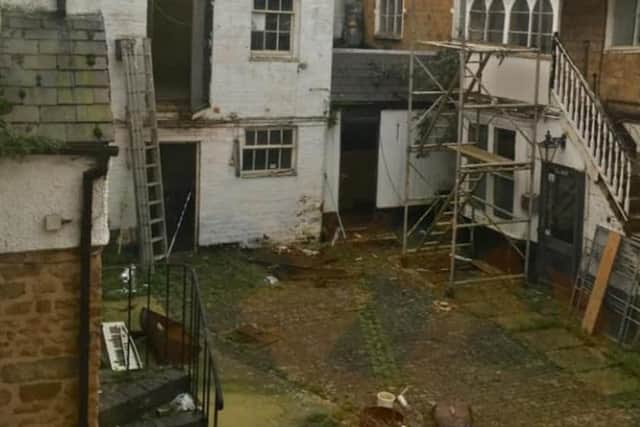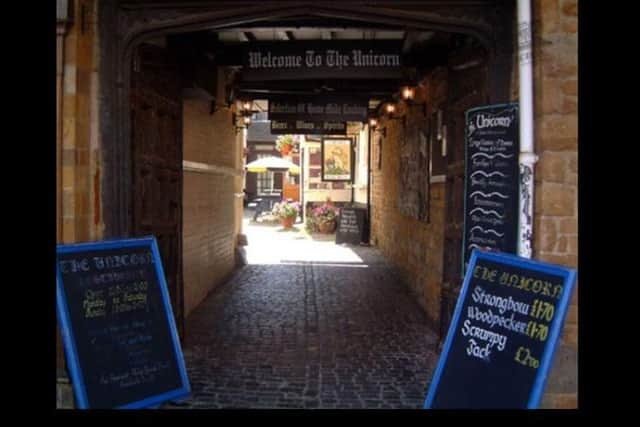Council steps in, in a bid to prevent further decay of a beautiful historic Banbury inn, left empty for 16 years
This article contains affiliate links. We may earn a small commission on items purchased through this article, but that does not affect our editorial judgement.
and live on Freeview channel 276
The Grade II listed Unicorn Hotel lies tucked away behind huge, oak doors off the Market Place; many people new to Banbury might never know it was there. But until 2007, it was a much-loved town centre pub, famed for its lunches.
The Unicorn has been given planning consent on two occasions to convert the buildings – which date back to the 1600s – into seven apartments. Cherwell District Council has this year agreed to relax some of the planning conditions imposed for the finish of the conversion.
Advertisement
Hide AdAdvertisement
Hide AdThe deterioration of the Unicorn has been under focus by Banbury townspeople on social media. A Facebook page has been set up especially to share photos of the inn and discuss the future of this important property, which dates back to the Civil War.


This week, a Cherwell District Council spokesman said: “We are aware of the historic significance of the Unicorn Pub building and officers have put it forward to be entered on the Historic England Buildings at Risk Register for 2023.
"This step can help local authorities assess priorities for action to protect buildings, and we look forward to that list being published in due course. It is a privately owned building but, as far as our powers permit, we are investigating what else may be done to assess its condition and protect it.”
A planning expert told the Banbury Guardian that being on a risk register would allow the council to go in to the property, if necessary, carry out vital repairs to protect the building and charge the cost to the owner.
Advertisement
Hide AdAdvertisement
Hide AdThe Historic England listing for the Unicorn contains structural information and has comments from a number of people who lament its decay and disuse.


The building was the first home of the Hunt Edmunds brewery and also John Cheney’s printing business.
The ‘Missing Pieces Project’ describes the building as having a wonderful history, describing it as having been built in the 1650s, probably from the stone of the recently demolished Banbury Castle.The Unicorn Inn was once owned by Mr John Hunt who started his brewery at the Inn before moving his business to Hunt and Edmunds Brewery in Broad St Banbury.
“Sadly the Inn has been hidden behind its own wooden gates for many years and has been allowed to fall into virtual ruin,” the project says.
Advertisement
Hide AdAdvertisement
Hide AdBanbury Then and Now says: “Many Banbury buildings were destroyed during the Civil War when the Royalist-held castle was besieged in 1644 and 1646. The Unicorn, probably built in 1648 was an early and striking replacement and the building was certainly an inn by 1676.
"John Cheney, landlord of the Unicorn began printing here in 1767 and Thomas Hunt, the founder of Hunt, Edmunds Brewery, started brewing on the premises in 1807.
"Beyond the Unicorn, Charles Pettit’s drapery shop occupied the so-called Prebendal House – a building of the 1660s re-fronted in the 18th or early 19th century.”
The Banbury Guardian’s efforts to find the owner of the building have not so far been successful.